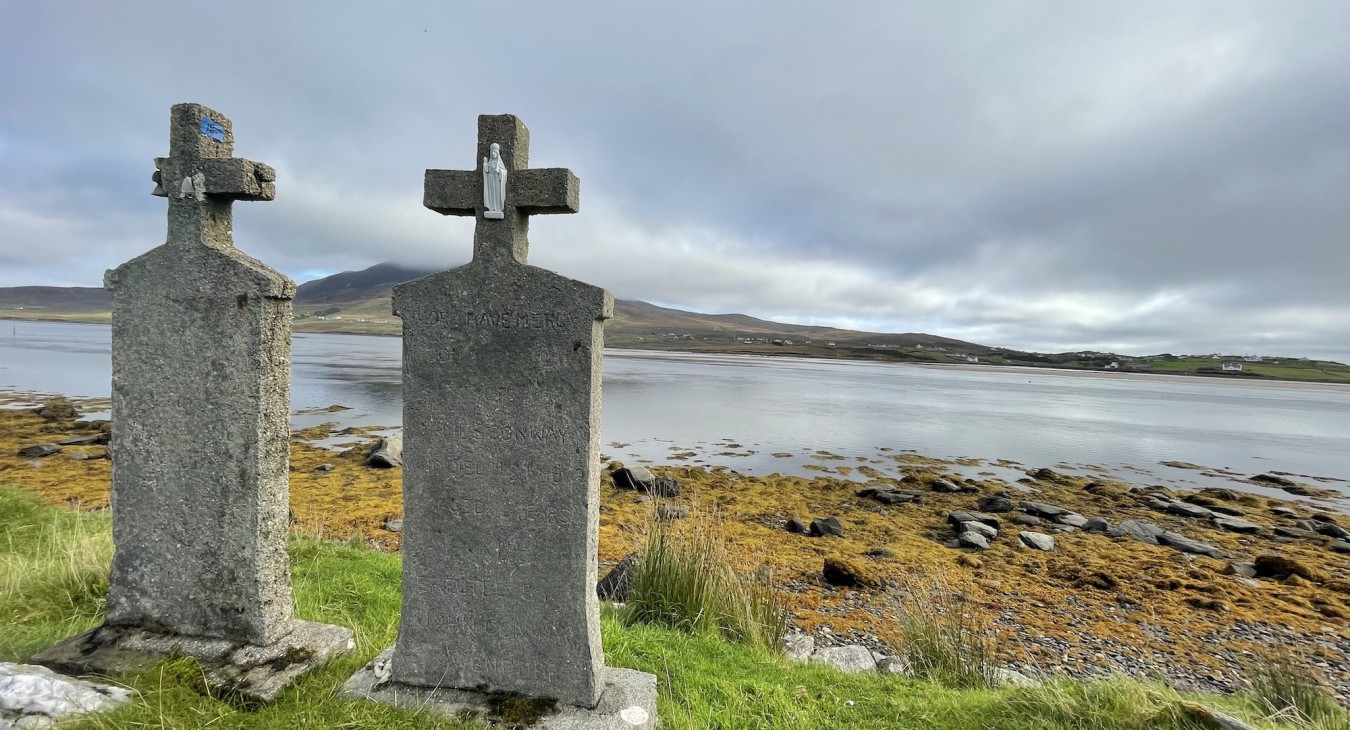Historic graves of Ireland and the Irish diaspora
The Historic Graves Project started in 2010, as a community-focused participatory grassroots heritage project, where local community groups living in Ireland were trained in low-cost high-tech field surveys of historic graveyards and recording of their own oral histories. In almost a decade, historicgraves.com published online more than 800 historic burial grounds, recording the location of approximatively 120,000 graves and collaboratively transcribing the details of 246,329 people, and counting. Thus building a genealogical tourism dataset geolocating the origins of families and subsequently leading diasporic tourists to specific places in Ireland at a very fine resolution of place. Whilst also bolstering the sense of place and identity of the rural population.
Since 2021, the Historic Graves pilot is part of the H2020-INCULTUM project, which allowed the project to deepen the focus on two remote and rural areas of Ireland: Achill (an island in the Nord-West of Ireland) and Ballyhoura (a large area in the Centre-South). In this context, an online visitors survey focused on tourism was also carried out, whose almost 1000 answers got us valuable feedback on the tourism potential of the platform and of the surveyed areas, along with important demographic data to better profile our visitors and potential tourists (i.e. over 50% of respondent are over 65, married with no dependent offspring, retired people, with good education, located abroad, mainly in the US, Australia, and UK). INCULTUM also offers the opportunity to create a tourism-oriented section of the platform, called Destinations: standalone microsites integrated into the main platform and dedicated to genealogical and social history, which combine graveyard content with graveyard trails combining surveyed graveyards with external Points of Interest, taking advantage of the strengths of other platforms (GMaps, YouTube, Wikipedia). These trails are designed to match the mode of transport of the tourist - combining walking, cycling, driving, and bus tour scales of operation.
- Co-create a national historic graveyard network.
- Train local community volunteers in heritage guiding; research and write local parish tours. This will focus on the embedded local knowledge base primarily involving over 50s in research and training.
- Test the hypothesis that the Parish structure is a valid means of developing a sustainable tourism product by measuring the tourism resources and capabilities in the participating micro-locations (using Arctur Flows).
- Test the hypothesis that payment-for-service is a valid mechanism for supporting local communities in the care, maintenance and enhancement of historic graveyards as biodiverse habitats and heritage tourism hubs.
- Test the hypothesis that there are funding possibilities for local communities in the digital realm. Identify a supporter base willing to subscribe payments to local heritage groups and build the ‘long tail’ of entertaining and educating heritage content and see if micropayments from the broader parish diaspora can provide an economic benefit to the local community while also extending a sense of identity and belonging outside the physical parish bounds.
- Explore the potential of the Historic Graves dataset for digital business models, in the framework of T2.5.
We have identified six local authority partners throughout the country, sufficiently dispersed to allow the development of a national pilot trail. With the cooperation of these local authorities, we will co-create and build parish-based trails with local community groups. Local heritage groups and Tidy Towns participants are amongst our target partners. One of the proposed partners is based in Northern Ireland, giving us an opportunity to assess cross-border similarities and differences in cultural tourism product development. Based on a large online survey carried out in 2022 (over 1000 participants) we know that half of our visitors are over 65 and 86% are over fifty, so silver tourists are a privileged target group in this pilot.
- A pilot national trail will be created.
- Local communities trained in tour guiding, historical research and online publication of their local heritage.
- Measurement of heritage tourism and creative tourism resources and activities at a local level.
Improved and sustainable heritage tourism flow for rural local communities and the improved care and maintenance of the heritage resource. - The web platform will be enriched with tourism-oriented features that favour engagement and retain visitors, like: customisable and shareable trails, tagging graveyards as visited based on geolocation, percentage of trail completed and badge for completed ones (gamification mechanism).
- Irish local authorities struggle with fitting heritage tourism community volunteerism into their financial streams. The payment for services approach will allow the local authority to test a new system to match funding to properly resourced and established groups.
Local authorities generally have stewardship of the historic graveyards we intend to build into a sustainable tourism network and, as such, they usually incur the cost of care and maintenance. There is no standard process for such works across the country and we aim to test the payment-for-services agreements model, which can also allow an increased focus on the enhancement of biodiversity in graveyard care schemes as they sit within intensively farmed landscapes.
Tourism organisations also have county-based organisational structures and we aim to partner with such groups so that the heritage resource is given better recognition in tourism marketing. This will also require our grassroots group to be supported in marketing and branding, as well as in tour and trail research and development.
The web platform is global, while the graveyards are local. One will drive the audience for the other. Irish rural communities have a strong sense of place and identity, and we believe this allows an insight into how other European rural groups also organise. One of our proposed partners is located across the border in Northern Ireland and we intend to identify commonalities between communities on both sides of the border.
Widen the perception of local graveyards as a common heritage resource to the large audience of the descendants of the Irish diaspora
Use the geolocated genealogical data from historic graveyards as a tool for tourism planning
Creation of tourism-oriented microsites promoted as Destinations





